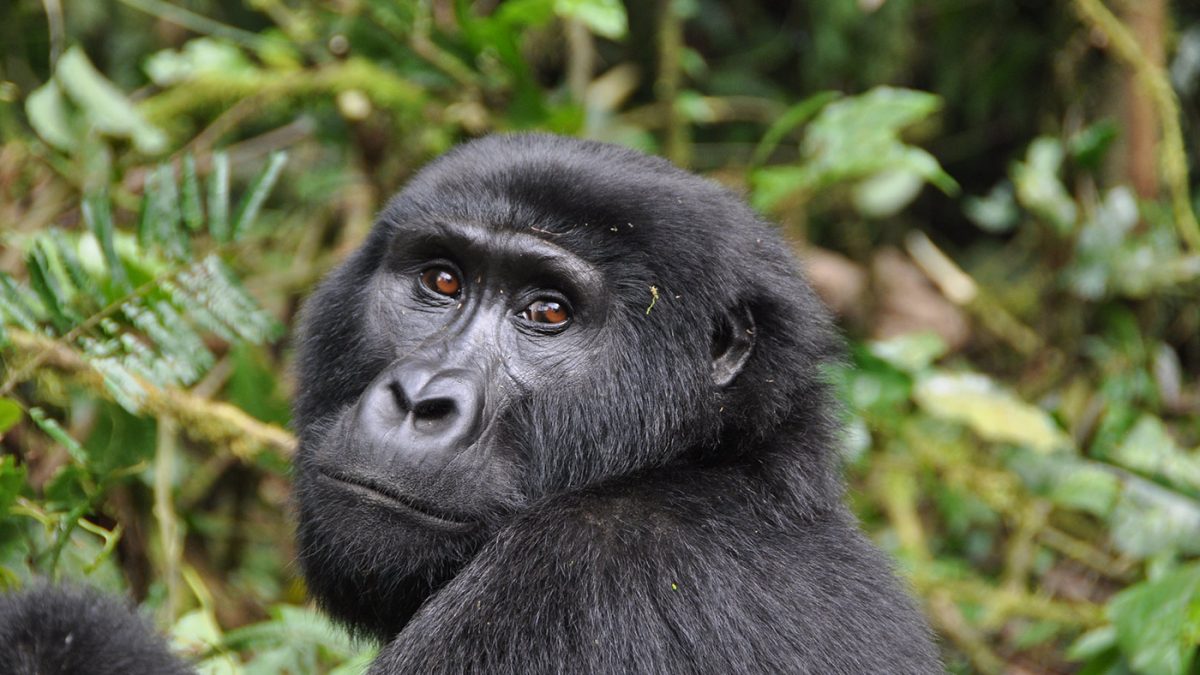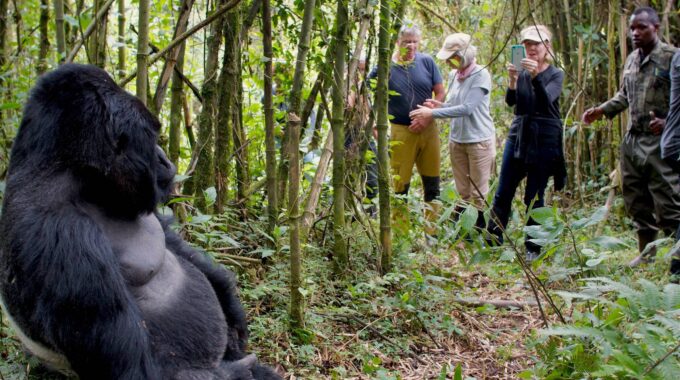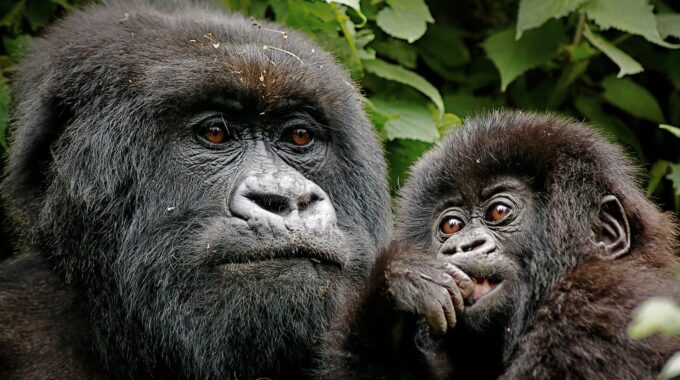Park Regulations and Visitor Guidelines for Gorilla Trekking in Rwanda and Uganda Gorilla trekking regulations:…
Community Involvement in Park Conservation
Volcanoes national park, Bwindi gorilla park, and Mgahinga Gorilla National Park—Community Involvement in Park Conservation

Community involvement in park conservation: Conservation of protected areas such as Volcanoes National Park, Bwindi Impenetrable National Park, and Mgahinga Gorilla National Park goes far beyond protecting wildlife—it also involves empowering the local communities that border these ecosystems. Community involvement in park conservation has become a cornerstone of sustainable tourism in Rwanda and Uganda, ensuring that local people benefit directly from tourism and actively participate in conservation efforts.
In this article, we explore how local communities contribute to and benefit from conservation, how their engagement strengthens long-term sustainability, and how visitors play a key role by choosing responsible tour operators like Gorilla Rwanda Safaris.
Why Community Involvement Matters in Conservation
Conservation is most effective when local people are stakeholders in the process. Historically, conservation efforts often excluded nearby communities, leading to conflict, poaching, and deforestation. Today, the approach has shifted: communities are now seen as allies in conservation, not adversaries.
Key reasons for community involvement include:
- Enhancing biodiversity protection by reducing human-wildlife conflict
- Creating alternative livelihoods to reduce reliance on poaching or forest resources
- Fostering cultural exchange between tourists and locals
- Promoting education and awareness about conservation benefits
Community Conservation in Volcanoes National Park – Rwanda
Volcanoes National Park is renowned for its mountain gorillas, but it’s also a success story in community-based conservation.
Revenue Sharing Program
The Rwandan Development Board (RDB) runs a revenue-sharing scheme where 10% of park entrance fees go directly to community development projects. These include:
- Building schools and health centers
- Constructing water supply systems
- Developing roads and infrastructure
This model ensures that locals see direct benefits from gorilla trekking tourism.
SACOLA Cooperative (Sabyinyo Community Livelihood Association)
SACOLA is a prominent example of how tourism supports conservation. Profits from the Sabyinyo Silverback Lodge are reinvested into the community. Projects include:
- Providing housing for vulnerable families
- Supporting agricultural cooperatives
- Creating employment opportunities in eco-tourism
Tourists visiting through responsible operators like Gorilla Rwanda Safaris directly support these initiatives.
Bwindi Impenetrable Forest—Uganda’s Conservation Heartland
Bwindi Impenetrable National Park is a UNESCO World Heritage Site and home to nearly half of the world’s mountain gorillas. Community conservation here is integrated into nearly every aspect of park management.
Community Health and Education Projects
With support from NGOs and the Uganda Wildlife Authority (UWA), local health centers, schools, and vocational training centers have been established. These projects help
- Improve maternal and child health
- Reduce diseases that can affect gorillas (e.g., respiratory illnesses)
- Encourage education as an alternative path to resource exploitation
Batwa Cultural Experiences
The Batwa people, indigenous forest dwellers, were displaced during the park’s establishment. Today, cultural tourism initiatives allow them to:
- Share their heritage through guided forest walks, dances, and storytelling
- Earn income and preserve their traditions
- Participate in conservation through education and collaboration with park authorities
By booking tours that include Batwa experiences, visitors help elevate marginalized voices while supporting cultural preservation.
Conservation Through Livelihoods
Local cooperatives produce crafts, honey, and organic coffee sold to tourists. Programs like the Ride 4 a Woman initiative empower women through weaving and tailoring enterprises. These efforts reduce dependency on forest resources while fostering conservation-minded communities.
Community-Led Conservation in Mgahinga Gorilla National Park
Though smaller than Bwindi, Mgahinga Gorilla National Park is deeply rooted in community collaboration.
Mgahinga Gorilla Group and Community Rangers
Locals are trained as community conservation rangers, helping monitor wildlife, report illegal activities, and educate their neighbors. This inclusive approach reduces poaching and increases local pride in conservation.
Golden Monkey and Gorilla Trekking Benefits
Like Bwindi, Mgahinga benefits from a revenue-sharing model. Community projects funded include:
- School construction
- Microfinance programs
- Agricultural training centers
Locals also benefit from employment as porters, guides, and hospitality staff, with direct interaction with tourists creating a sense of shared ownership in park success.
How Gorilla Rwanda Safaris Supports Community Conservation
As a trusted operator in both Rwanda and Uganda, Gorilla Rwanda Safaris is committed to ethical tourism that empowers local communities.
Key Contributions:
- Hiring local guides and porters to ensure income stays in the community
- Offering cultural tours and community visits, supporting local initiatives
- Educating travelers about sustainable practices and conservation
- Collaborating with eco-lodges that reinvest in surrounding communities
Choosing Gorilla Rwanda Safaris means your travel investment supports real change.
Benefits of Community Involvement in Conservation
- 1. Increased Wildlife Protection Communities help patrol forests, report poaching, and create buffer zones through reforestation. Their proximity makes them ideal allies for on-the-ground conservation.
- 2. Better Human-Wildlife Coexistence Programs that introduce beekeeping, fencing, and crop insurance reduce conflict between wildlife and farmers. This ensures both gorillas and humans thrive side by side.
- 3. Long-Term Sustainability When people benefit directly from conservation, they’re more likely to support it. Community involvement ensures generational stewardship of natural resources.
- 4. Enhanced Visitor Experience Interacting with local people—whether through cultural performances, village walks, or craft workshops—enriches the travel experience and builds global solidarity.
Challenges Facing Community Conservation
While the successes are notable, community involvement in conservation also faces hurdles:
- Limited funding for community projects
- Balancing tourism growth with environmental protection
- Land ownership disputes, especially among displaced communities
- Climate change, which threatens both agriculture and biodiversity
Continued support from the government, NGOs, and ethical tourism operators is vital.
How You Can Help as a Visitor
- Book with responsible tour operators like Gorilla Rwanda Safaris
- Hire local guides and porters
- Participate in cultural experiences and community tours
- Buy local crafts and products
- Respect park rules and local customs
- Donate to community conservation projects via verified platforms
Conclusion
Community involvement in park conservation is not just a strategy—it’s a necessity for protecting iconic destinations like Volcanoes National Park, Bwindi Impenetrable Forest, and Mgahinga Gorilla National Park. When local people are empowered, conservation thrives, and visitors enjoy richer, more meaningful experiences.
At Gorilla Rwanda Safaris, we believe that sustainable tourism is the bridge between preservation and prosperity. Join us in supporting the people who protect Africa’s wild places and experience firsthand the power of community-led conservation.
Related Blog Posts
- Why Gorilla Trekking Permits Are Worth the Cost
- Cultural Encounters on a Gorilla Safari in Rwanda and Uganda
- How to Choose Between Rwanda and Uganda for Gorilla Trekking



